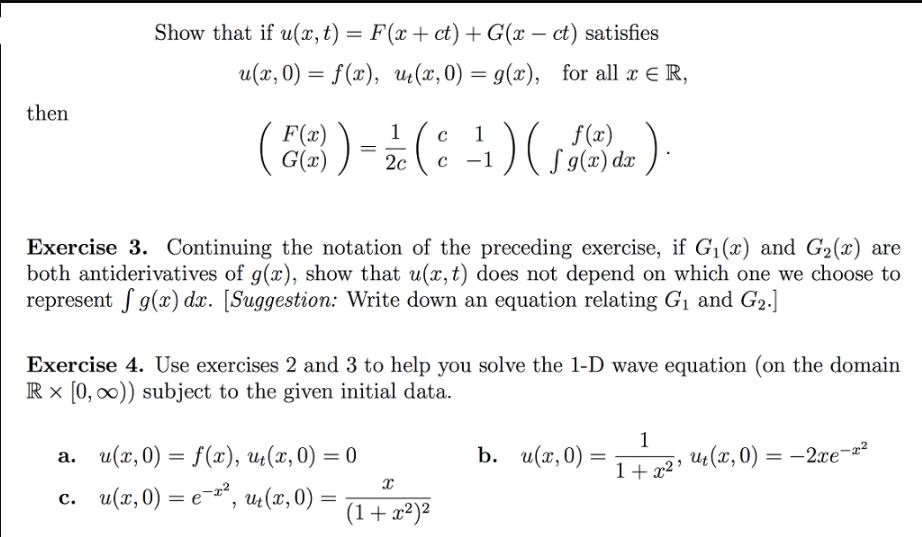Answered step by step
Verified Expert Solution
Question
1 Approved Answer
then Show that if u(x,t) = F(x + ct) + G(x - ct) satisfies u(x, 0) = f(x), u(x, 0) = g(x), for all

then Show that if u(x,t) = F(x + ct) + G(x - ct) satisfies u(x, 0) = f(x), u(x, 0) = g(x), for all x = R, 1 C 2c f(x) 9(x)dx ((x)) = (-1) (())- Exercise 3. Continuing the notation of the preceding exercise, if G(x) and G2(x) are both antiderivatives of g(x), show that u(x, t) does not depend on which one we choose to represent g(x) dx. [Suggestion: Write down an equation relating G and G2.] Exercise 4. Use exercises 2 and 3 to help you solve the 1-D wave equation (on the domain Rx [0, )) subject to the given initial data. a. u(x, 0) = f(x), u(x, 0) = 0 1 b. u(x, 0) = 1+x' ut(x, 0) = -2xe-x == c. u(x, 0) = ex, ut(x, 0) = = (1 + x2)2 X
Step by Step Solution
There are 3 Steps involved in it
Step: 1
To solve these exercises lets start with Exercise 3 and then move on to Exercise 2 After that well use the results to solve Exercise 4 Exercise 3 We h...
Get Instant Access to Expert-Tailored Solutions
See step-by-step solutions with expert insights and AI powered tools for academic success
Step: 2

Step: 3

Ace Your Homework with AI
Get the answers you need in no time with our AI-driven, step-by-step assistance
Get Started


